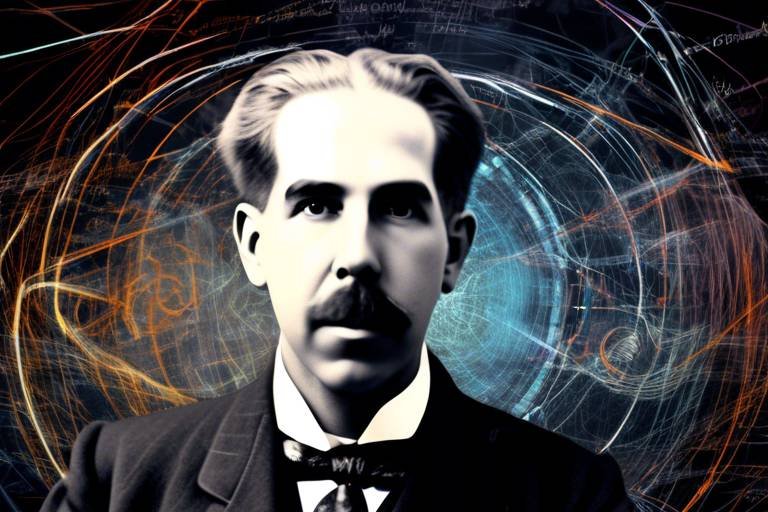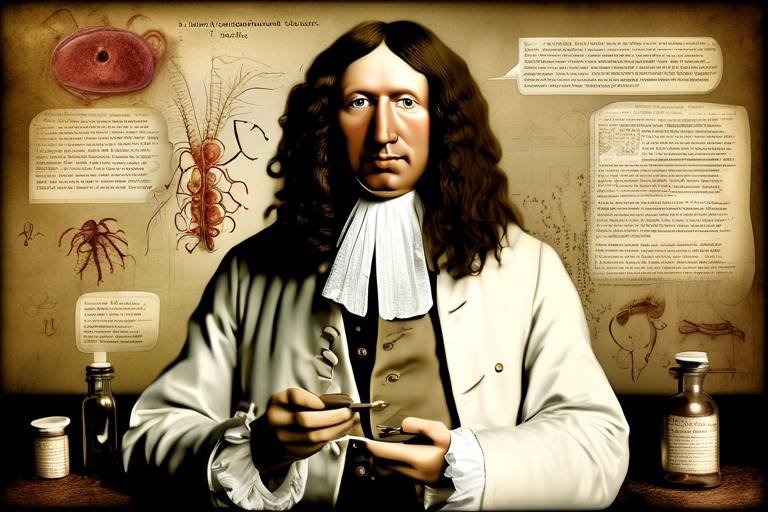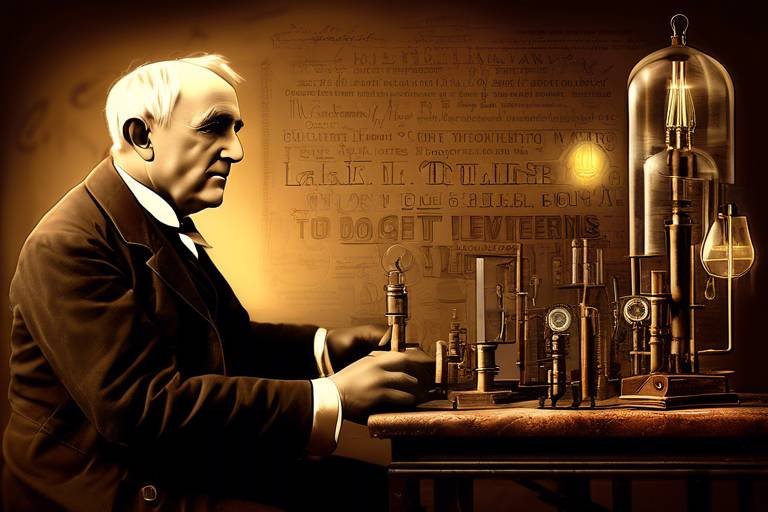The Discoveries of Richard Smalley in Nanotechnology
Richard Smalley, a name synonymous with groundbreaking advancements in the realm of nanotechnology, made contributions that continue to shape the scientific landscape today. His remarkable journey began with a curiosity that transcended traditional chemistry, leading him to explore the world at an atomic level. This article delves into his innovative research, examining how his findings have not only transformed our understanding of materials but have also paved the way for future technological breakthroughs. Smalley's work is a testament to the idea that sometimes, the smallest things can lead to the biggest changes.
At its core, nanotechnology is the manipulation of matter at the atomic and molecular scale, typically within the range of 1 to 100 nanometers. To put this into perspective, a nanometer is one-billionth of a meter! This field is significant because it enables scientists and engineers to create materials and devices with unique properties that differ from their larger-scale counterparts. From electronics to energy solutions, the applications of nanotechnology are vast and varied. Imagine being able to design materials that are lighter, stronger, and more efficient just by manipulating their atomic structure. The potential is truly explosive.
Before achieving fame for his discoveries, Richard Smalley engaged in early research that laid the groundwork for his later contributions to nanotechnology. His initial studies focused on the properties of various materials, which sparked his interest in the intricate world of nanostructures. These early investigations were not just academic exercises; they were the stepping stones that led him to the remarkable discovery of fullerenes, a pivotal moment in the field of chemistry. His ability to think outside the box and challenge existing paradigms positioned him as a leader in the scientific community.
In 1985, Richard Smalley, along with his colleagues, made a groundbreaking discovery: the identification of fullerenes, a new form of carbon. This molecule, shaped like a soccer ball, consists of 60 carbon atoms arranged in a unique structure. The discovery was serendipitous, arising from experiments aimed at studying carbon vaporization. Smalley's excitement was palpable; he had stumbled upon a molecule that would change the course of materials science. Fullerenes opened up a plethora of possibilities in nanotechnology, leading to innovations in various fields, including electronics, materials engineering, and medicine.
Understanding the structure and properties of fullerenes is crucial to appreciating their significance. Fullerenes possess a spherical shape, which gives them remarkable stability and unique chemical properties. Their ability to form covalent bonds with other elements allows for the creation of novel materials. For instance, fullerenes can act as electron acceptors in photovoltaic cells, enhancing their efficiency. This unique geometry is not just a scientific curiosity; it has real-world implications, leading to advancements in nanotechnology that could revolutionize energy production and storage.
The applications of fullerenes are as diverse as they are exciting. They have been explored in various fields, including:
- Medicine: Fullerenes have potential applications in drug delivery systems, where their unique structure can encapsulate drugs and target specific cells.
- Electronics: Their conductive properties make them suitable for use in advanced electronic devices, including transistors and sensors.
- Materials Science: Fullerenes can enhance the strength and durability of materials, leading to the development of stronger composites.
Building on his discovery of fullerenes, Smalley also played a pivotal role in the development of carbon nanotubes. These cylindrical structures, composed of carbon atoms, exhibit extraordinary mechanical, thermal, and electrical properties. Their unique characteristics have made them a focal point in nanotechnology research. Imagine a material that is stronger than steel yet lighter than aluminum—this is the promise of carbon nanotubes. Industries ranging from aerospace to electronics are eagerly exploring their potential applications, and Smalley's contributions have been instrumental in this journey.
The influence of Smalley's research extends profoundly into the medical field. His work in nanotechnology has inspired innovations that are revolutionizing how we approach drug delivery and disease treatment. By harnessing the unique properties of nanomaterials, researchers are developing targeted therapies that can significantly improve patient outcomes.
One of the most exciting applications of nanotechnology in medicine is targeted drug delivery. Traditional drug delivery methods often come with side effects because medications affect both diseased and healthy cells. However, with nanotechnology, drugs can be encapsulated in nanoparticles that specifically target diseased cells. This precision not only enhances treatment efficacy but also minimizes side effects, leading to a more personalized approach to healthcare. It's like having a guided missile that only hits the target, leaving everything else intact.
Moreover, nanotechnology enhances diagnostic techniques, allowing for earlier and more accurate disease detection. Innovations stemming from Smalley's discoveries have led to the development of nanosensors capable of detecting biomarkers at incredibly low concentrations. This capability is changing the landscape of diagnostics, enabling doctors to diagnose conditions much earlier than previously possible. Imagine catching a disease in its infancy—this is the power of nanotechnology in action.
Q: What are fullerenes?
A: Fullerenes are a form of carbon molecule with a unique spherical structure, discovered by Richard Smalley and his team in 1985.
Q: How do carbon nanotubes differ from fullerenes?
A: While fullerenes are spherical, carbon nanotubes are cylindrical structures made of carbon atoms, exhibiting exceptional strength and electrical conductivity.
Q: What role does nanotechnology play in medicine?
A: Nanotechnology enables targeted drug delivery and enhances diagnostic techniques, leading to improved treatment outcomes and earlier disease detection.

Overview of Nanotechnology
This article explores the groundbreaking contributions of Richard Smalley to the field of nanotechnology, highlighting his innovative research and the impact of his findings on science and technology.
Nano-what? You might be wondering why the term nanotechnology is buzzing around in scientific circles and beyond. Well, let me break it down for you! Nanotechnology refers to the manipulation of matter on an incredibly small scale—think atoms and molecules. To give you a sense of scale, a nanometer is one-billionth of a meter. That's like comparing a marble to the size of the Earth! This field is not just a scientific curiosity; it has profound implications for various industries, transforming everything from electronics to medicine.
So, why is nanotechnology significant? For starters, it opens up a world of possibilities. By working at the nanoscale, scientists can create materials with unique properties that differ from their larger counterparts. For example, gold nanoparticles can appear red or purple instead of their typical metallic hue, and they exhibit different chemical reactivity. This ability to tailor materials at the atomic level leads to innovations that can enhance performance in countless applications.
Let’s take a peek into some key areas where nanotechnology is making waves:
- Medicine: Think targeted drug delivery systems that can release medication right where it's needed, minimizing side effects and maximizing effectiveness.
- Electronics: Imagine faster, smaller, and more efficient electronic devices, thanks to nanoscale transistors and components.
- Energy: Nanotechnology is paving the way for more efficient solar cells and batteries that can store energy more effectively.
- Materials Science: Creating stronger, lighter materials for everything from sports equipment to aerospace technology.
In essence, nanotechnology is a game-changer. It’s like having a magic wand that allows us to manipulate the very building blocks of matter to create new solutions to old problems. The potential applications are as vast as the universe itself, and we are just scratching the surface of what’s possible!
As we delve deeper into the world of nanotechnology, we’ll uncover how Richard Smalley’s pioneering discoveries laid the groundwork for these advancements. His work not only reshaped our understanding of materials but also ignited a revolution that continues to influence science and technology today.
What is nanotechnology?
Nanotechnology is the manipulation of matter at the atomic and molecular scale, typically at dimensions of less than 100 nanometers.
What are some applications of nanotechnology?
Applications include medicine (targeted drug delivery), electronics (smaller and faster devices), energy (efficient solar cells), and materials science (stronger materials).
Why is Richard Smalley important in nanotechnology?
Richard Smalley was instrumental in the discovery of fullerenes, which are key components in the development of nanotechnology and materials science.
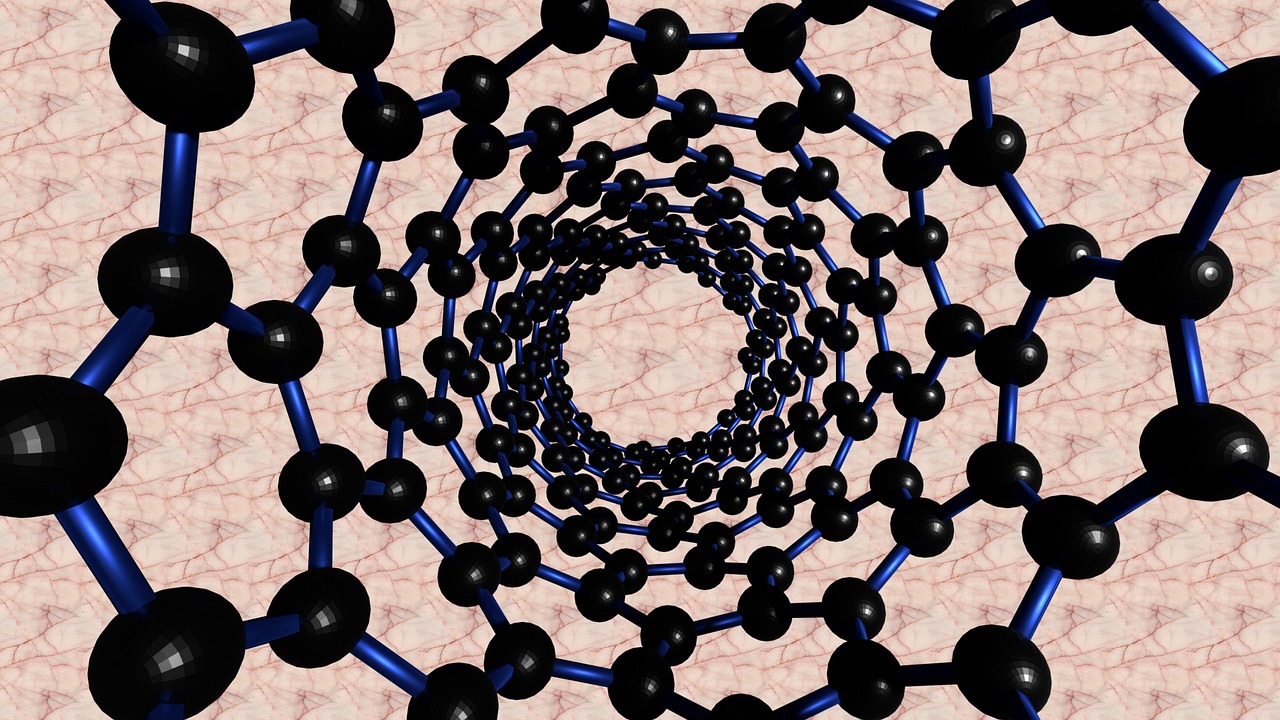
Smalley's Early Research
Richard Smalley, a name synonymous with innovation in the realm of nanotechnology, began his remarkable journey in the world of science with a focus on chemistry. His early research was not merely a stepping stone but a solid foundation that would support his future groundbreaking discoveries. During the 1970s and 1980s, Smalley was immersed in the study of chemical reactions and molecular structures, which ultimately led him to explore the fascinating world of carbon-based materials.
One of the key areas of his early research involved the investigation of laser ablation techniques. This method, which uses focused laser beams to vaporize materials, allowed Smalley and his team to create clusters of atoms and molecules. By manipulating these clusters, they could observe how atoms interacted at an incredibly small scale. This work was pivotal in understanding the behavior of carbon atoms and laid the groundwork for his later discoveries.
Another significant aspect of Smalley's early work was his collaboration with other prominent scientists. His partnerships not only enriched his research but also fostered an environment of creativity and innovation. For example, working alongside his colleagues at Rice University, Smalley utilized advanced spectroscopy techniques to analyze carbon clusters. This collaborative spirit was essential in pushing the boundaries of what was known about carbon and its potential applications.
As he delved deeper into the world of molecular chemistry, Smalley began to recognize the distinct properties of carbon atoms when arranged in specific configurations. His curiosity about how these arrangements could lead to new materials and applications was the driving force behind his relentless pursuit of knowledge. It was during this period that he began to conceptualize the structures that would eventually be known as fullerenes, paving the way for a revolution in materials science.
In essence, Smalley's early research was characterized by a blend of curiosity, collaboration, and cutting-edge techniques. His dedication to exploring the atomic world not only expanded the horizons of chemistry but also set the stage for the groundbreaking discoveries that would follow. The significance of his early work cannot be overstated; it was the catalyst that ignited a new era in nanotechnology, one that would impact countless industries and change the way we think about materials at the nanoscale.

Discovery of Fullerenes
Richard Smalley’s journey into the realm of fullerenes is nothing short of a scientific adventure. In 1985, while collaborating with his colleagues, Smalley made a momentous discovery that would change the landscape of nanotechnology forever. Imagine a molecule shaped like a soccer ball, composed entirely of carbon atoms—this was the essence of fullerenes. These unique structures, also known as buckyballs, were discovered during experiments aimed at understanding the behavior of carbon in different forms.
The discovery of fullerenes was serendipitous, stemming from a laser-vaporization experiment where a carbon target was bombarded with a powerful laser beam. This high-energy process led to the formation of a variety of carbon clusters. Among these clusters, Smalley and his team identified the C60 molecule, which consists of 60 carbon atoms arranged in a spherical shape. The excitement surrounding this finding was palpable, as it opened the door to a new class of materials, distinct from graphite and diamond, which had long been the primary focus in carbon research.
What makes fullerenes so fascinating? Well, their geometric configuration is not just aesthetically pleasing; it also imparts a range of remarkable properties. Fullerenes exhibit unique electrical, thermal, and chemical characteristics, making them incredibly versatile for various applications. For instance, they can act as superconductors, and their hollow structure allows them to encapsulate other molecules, which is particularly useful in drug delivery systems. This versatility is akin to a Swiss Army knife in the world of materials science—each function tailored to meet specific needs.
Furthermore, the implications of fullerenes extend far beyond their initial discovery. Their potential applications are vast and varied, spanning several fields including materials science, electronics, and even medicine. Researchers have been exploring how fullerenes can be utilized in creating advanced materials, improving solar cells, and enhancing the efficacy of pharmaceuticals. The excitement surrounding fullerenes has spurred a significant amount of research, leading to a deeper understanding of their properties and how they can be harnessed for practical uses.
In summary, Richard Smalley’s discovery of fullerenes not only marked a pivotal moment in nanotechnology but also laid the groundwork for future innovations. The unique properties of fullerenes have inspired countless studies and applications, making them a cornerstone of modern scientific inquiry. As we continue to explore the possibilities that fullerenes present, we can only imagine the revolutionary advancements that lie ahead in various industries.
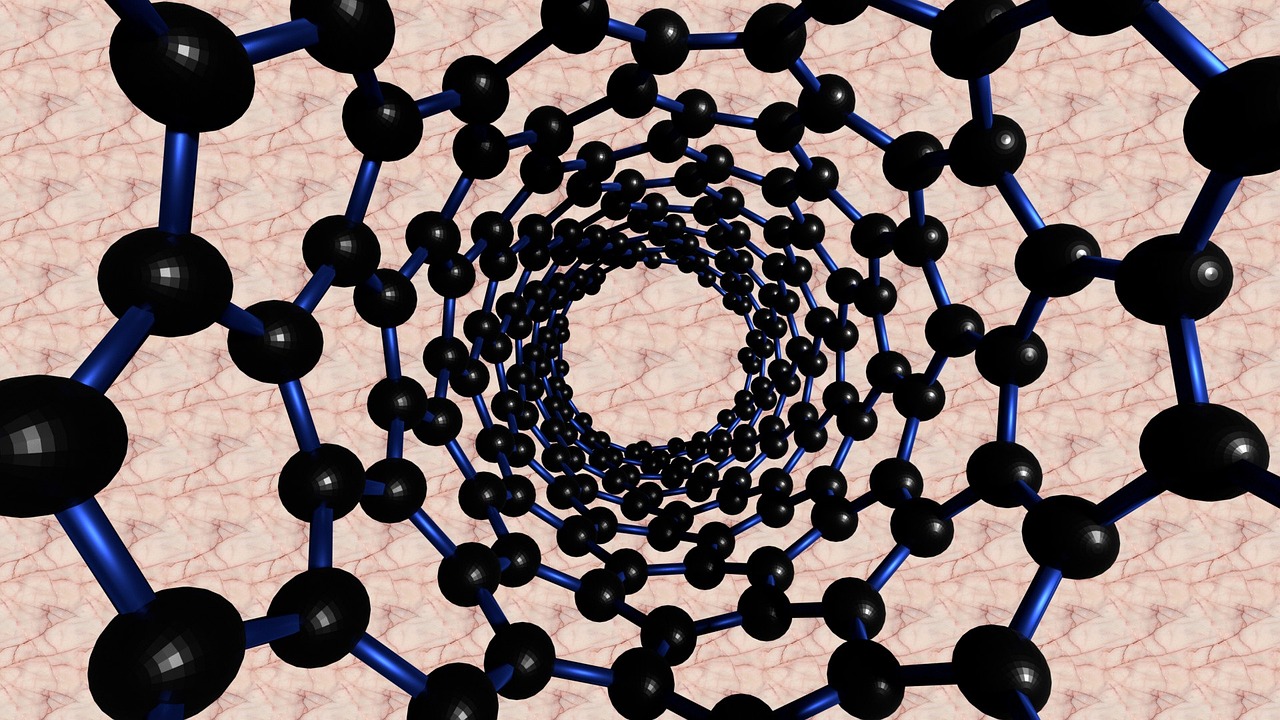
Structure and Properties of Fullerenes
Fullerenes are fascinating molecules that have captured the attention of scientists and researchers alike. They are essentially spherical or cylindrical structures composed entirely of carbon atoms, arranged in a way that resembles a soccer ball or a tube. The most famous fullerene, known as C60, consists of 60 carbon atoms and exhibits a unique geometric configuration that is both stable and versatile. This arrangement allows fullerenes to possess remarkable properties, making them a subject of extensive study in nanotechnology.
The structure of fullerenes can be likened to a network of interconnected carbon atoms, creating a series of pentagons and hexagons. This combination leads to a highly symmetrical shape, which is crucial for maintaining the integrity of the molecule under various conditions. The properties of fullerenes are equally impressive; they exhibit high tensile strength, resilience, and electrical conductivity. These characteristics open the door to a myriad of applications, from materials science to electronics.
To better understand the properties of fullerenes, it’s essential to consider some of their key features:
- Stability: Fullerenes are remarkably stable due to their unique bonding structure, allowing them to withstand heat and chemical reactions.
- Electrical Conductivity: Certain fullerenes can conduct electricity, making them valuable in the development of electronic devices.
- Solubility: Fullerenes can dissolve in various solvents, which is advantageous for their incorporation into different materials.
- Reactivity: Despite their stability, fullerenes can participate in chemical reactions, allowing for functionalization and modification for specific applications.
Moreover, the spherical shape of fullerenes enables them to encapsulate other molecules, a property that has significant implications in drug delivery systems. By enclosing pharmaceutical compounds, fullerenes can enhance the bioavailability of drugs, targeting specific cells in the body while minimizing side effects. This innovative approach exemplifies how the structure and properties of fullerenes are paving the way for advancements in various scientific fields.
In summary, the unique structure of fullerenes, characterized by their spherical and cylindrical forms, along with their remarkable properties, positions them as a cornerstone in the study of nanotechnology. As research continues to unveil their potential, fullerenes are set to play a crucial role in the development of new materials and technologies that could transform our world.

Applications of Fullerenes
Fullerenes, often referred to as "buckyballs" or "bucky tubes," have ushered in a new era of innovation across various fields, thanks to their unique structure and properties. Imagine tiny soccer balls made of carbon atoms, each one capable of carrying out extraordinary tasks. Their applications span a wide range of industries, including medicine, materials science, and electronics. Let's dive into some of the most exciting applications of fullerenes and understand why they are considered a game-changer.
In the realm of medicine, fullerenes are making waves as potential agents for drug delivery and therapeutic applications. Their spherical shape allows them to encapsulate drugs, effectively transporting them to targeted areas within the body. This targeted approach not only enhances the efficacy of treatments but also minimizes side effects, making therapies safer for patients. For instance, researchers are exploring the use of fullerenes in cancer treatment, where they can deliver chemotherapy drugs directly to tumor cells, sparing healthy cells in the process.
Moreover, fullerenes exhibit remarkable antioxidant properties. This characteristic enables them to neutralize free radicals, which are notorious for causing cellular damage and contributing to various diseases, including cancer and aging. As a result, fullerenes are being investigated for their potential use in anti-aging products and nutraceuticals, offering promising avenues for enhancing health and longevity.
In the field of materials science, fullerenes are revolutionizing the way we think about materials. Their unique structure grants them exceptional strength and resilience, making them ideal candidates for creating advanced composite materials. These composites can be utilized in industries such as aerospace, automotive, and construction, where strength-to-weight ratios are critical. For example, when incorporated into polymers, fullerenes can significantly enhance the mechanical properties of the material, leading to lighter and more durable products.
Additionally, fullerenes have found applications in electronics. Their ability to conduct electricity makes them suitable for use in various electronic devices, including solar cells and transistors. Researchers are exploring their potential in creating more efficient energy storage systems, which could lead to advancements in battery technology. This could mean longer-lasting batteries for our gadgets and more efficient solar panels, ultimately contributing to a greener future.
| Application Area | Description |
|---|---|
| Medicine | Drug delivery systems and antioxidant properties for disease treatment. |
| Materials Science | Advanced composites with enhanced strength and durability. |
| Electronics | Conductive materials for solar cells and energy storage systems. |
As we can see, the applications of fullerenes are not just limited to one field; they are interwoven into the fabric of modern science and technology. The versatility of these molecules opens up numerous possibilities, making them a focal point for ongoing research and development. With every discovery, we inch closer to unlocking their full potential, paving the way for innovative solutions that could redefine our future.
- What are fullerenes? Fullerenes are carbon molecules that form a hollow structure, resembling a soccer ball or tube.
- How are fullerenes used in medicine? They are used for targeted drug delivery and possess antioxidant properties that can help combat diseases.
- Can fullerenes be used in electronics? Yes, their conductive properties make them suitable for applications in solar cells and transistors.
- What makes fullerenes unique? Their unique geometric configurations and exceptional strength make them stand out in various applications.

Development of Nanotubes
The journey of carbon nanotubes is a fascinating tale of innovation and discovery, largely attributed to the pioneering work of Richard Smalley. These remarkable structures, which are essentially cylindrical nanostructures made of carbon atoms, have revolutionized the field of nanotechnology. Smalley's research into fullerenes laid the groundwork for the eventual discovery of carbon nanotubes, which are essentially one-dimensional relatives of their fullerene counterparts. The unique properties of carbon nanotubes, such as their extraordinary strength, electrical conductivity, and thermal stability, have opened up a myriad of possibilities across various industries.
To truly appreciate the significance of carbon nanotubes, it's essential to understand their structure. A carbon nanotube can be visualized as a sheet of graphene, which is a single layer of carbon atoms arranged in a two-dimensional honeycomb lattice, rolled into a cylindrical shape. This structure not only imparts remarkable mechanical properties but also gives rise to unique electronic characteristics. For instance, depending on how the graphene sheet is rolled, nanotubes can either behave as semiconductors or conductors, making them incredibly versatile for electronic applications.
The development of carbon nanotubes has led to a surge of interest in their applications. From enhancing materials to creating advanced electronic devices, the potential uses are vast. Here are some notable applications:
- Electronics: Carbon nanotubes are used in transistors, sensors, and other electronic components due to their excellent conductivity and small size.
- Materials Science: When integrated into composites, carbon nanotubes significantly enhance strength and durability, making them ideal for aerospace and automotive industries.
- Energy Storage: Their high surface area and conductivity make them suitable for applications in batteries and supercapacitors, leading to more efficient energy storage solutions.
- Medical Applications: Carbon nanotubes are being explored for drug delivery systems and as agents for imaging and diagnostics, showcasing their potential in the healthcare sector.
Furthermore, the synthesis methods developed for carbon nanotubes, such as chemical vapor deposition (CVD), have allowed for the production of high-quality nanotubes in a controlled manner. This has been a game-changer for researchers and industries alike, enabling the exploration of new applications that were once thought impossible. As we continue to delve deeper into the properties and potential of carbon nanotubes, it's clear that Richard Smalley's contributions to nanotechnology have set the stage for a new era of scientific advancement.
What are carbon nanotubes?
Carbon nanotubes are cylindrical nanostructures made of carbon atoms arranged in a hexagonal lattice, known for their exceptional mechanical, electrical, and thermal properties.
How were carbon nanotubes discovered?
Carbon nanotubes were first discovered in 1991 by Sumio Iijima, but Richard Smalley's work on fullerenes paved the way for understanding their properties and potential applications.
What are the applications of carbon nanotubes?
Carbon nanotubes have a wide range of applications, including electronics, materials science, energy storage, and medical fields, particularly in drug delivery and diagnostics.
Why are carbon nanotubes important in nanotechnology?
Carbon nanotubes are important because they exhibit unique properties that can be harnessed for various technological advancements, making them a key component of future innovations in nanotechnology.

Impact on Medicine
Richard Smalley's research has profoundly influenced the medical field, acting as a catalyst for the revolutionary advancements we see today in healthcare. His work in nanotechnology has opened up a world of possibilities, particularly in how we approach disease treatment and drug delivery. Imagine a world where medications are not just thrown at the problem but are specifically tailored to target the disease at its source. This is not science fiction; it's the reality that Smalley's discoveries have helped to create.
One of the most exciting implications of Smalley's work is the development of targeted drug delivery systems. These systems utilize nanotechnology to deliver drugs directly to the cells that need them most, minimizing the impact on healthy cells. This is akin to a precision-guided missile striking its target while leaving the surrounding area unharmed. With traditional drug delivery methods, patients often experience a myriad of side effects due to the indiscriminate nature of the drugs. However, with targeted delivery, the goal is to enhance treatment efficacy while reducing side effects, making the experience far more tolerable for patients.
For instance, in cancer treatment, nanotechnology allows for the creation of nanoparticles that can encapsulate chemotherapy drugs and release them only when they reach the tumor site. This targeted approach not only increases the effectiveness of the treatment but also significantly decreases the side effects that would typically affect the patient's overall health. It’s a game-changer in the fight against cancer and other chronic illnesses.
Moreover, Smalley’s contributions extend beyond drug delivery; they have also paved the way for significant advancements in diagnostic applications. The ability to detect diseases early and accurately is crucial for effective treatment. Nanotechnology has introduced innovative diagnostic techniques that enhance our ability to monitor and detect diseases. For example, nanosensors can now identify specific biomarkers in the bloodstream, allowing for earlier diagnosis of conditions like cancer or heart disease.
The table below summarizes some of the key advancements in medical diagnostics made possible by Smalley’s research:
| Diagnostic Technique | Description | Benefits |
|---|---|---|
| Nanosensors | Devices that can detect specific molecules at very low concentrations. | Early disease detection, increased accuracy. |
| Nanoparticles in Imaging | Use of nanoparticles to enhance imaging techniques like MRI and CT scans. | Improved clarity and detail in imaging. |
| Point-of-Care Testing | Rapid diagnostic tests that can be performed at the site of patient care. | Faster results, immediate treatment decisions. |
In summary, Richard Smalley's groundbreaking work in nanotechnology has not only transformed our understanding of materials science but has also significantly impacted the medical field. His innovations in targeted drug delivery systems and advanced diagnostic techniques are paving the way for a future where medical treatments are more effective and personalized than ever before. As we continue to explore the potential of nanotechnology in medicine, the possibilities seem limitless, promising a healthier future for all.
- What is nanotechnology? Nanotechnology is the manipulation of matter on an atomic or molecular scale, typically involving structures sized between 1 to 100 nanometers.
- How did Richard Smalley contribute to nanotechnology? Smalley is best known for his discovery of fullerenes and carbon nanotubes, which have numerous applications in materials science and medicine.
- What are fullerenes? Fullerenes are spherical, tubular, or ellipsoidal arrangements of carbon atoms, which have unique properties and potential applications in various fields.
- How does targeted drug delivery work? Targeted drug delivery systems use nanoparticles to deliver medication directly to diseased cells, minimizing side effects on healthy cells.
- What role does nanotechnology play in diagnostics? Nanotechnology enhances diagnostic techniques by improving the sensitivity and specificity of tests, enabling earlier and more accurate disease detection.

Targeted Drug Delivery
Imagine a world where medicine can be delivered directly to the cells that need it most, like a precision-guided missile targeting a specific enemy base. This is the revolutionary concept of , and it has been significantly advanced by the groundbreaking work of Richard Smalley in nanotechnology. By utilizing nanoparticles, researchers can create drug delivery systems that enhance the efficacy of treatments while minimizing side effects, making the healing process not just effective but also more comfortable for patients.
At its core, targeted drug delivery involves the use of nanocarriers—tiny particles that can encapsulate drugs and transport them directly to the diseased tissues. This method offers several advantages over traditional drug delivery systems. For instance, conventional treatments often lead to systemic side effects because drugs affect not only the target area but also healthy tissues. However, with targeted delivery, the drugs can be released in a controlled manner, ensuring that they only affect the intended cells. This targeted approach is akin to using a sniper rifle instead of a shotgun; it’s all about precision.
One of the most exciting aspects of targeted drug delivery is its application in cancer treatment. Cancer cells often express unique markers or receptors that can be exploited to deliver chemotherapy drugs specifically to them. For example, researchers have developed nanoparticles that can recognize and bind to these specific receptors on cancer cells. Once attached, the nanoparticles release their drug payload directly into the cancer cells, significantly increasing the treatment's effectiveness while reducing harm to surrounding healthy cells. This is a game-changer in the fight against cancer, where traditional treatments often come with debilitating side effects.
Furthermore, the versatility of nanotechnology allows for the incorporation of various therapeutic agents into these carriers, including chemotherapeutics, antibodies, and even gene therapies. This adaptability means that targeted drug delivery systems can be tailored to meet the specific needs of individual patients, paving the way for personalized medicine. For instance, a patient’s unique genetic makeup can influence how they respond to certain drugs; targeted systems can be designed to optimize treatment based on these genetic factors.
Here’s a quick look at how targeted drug delivery systems work:
| Step | Description |
|---|---|
| 1 | Design of Nanoparticles: Scientists create nanoparticles that can carry drugs and target specific cells. |
| 2 | Drug Loading: The therapeutic agents are loaded into the nanoparticles. |
| 3 | Targeting Mechanism: The nanoparticles are designed to recognize and bind to specific receptors on target cells. |
| 4 | Release of Drug: Once bound, the nanoparticles release the drug directly into the target cells. |
As we look to the future, the potential for targeted drug delivery is immense. With ongoing research and development, we may soon see even more sophisticated systems that can not only deliver drugs but also monitor the effectiveness of the treatment in real-time. This could revolutionize how we approach diseases, making treatments more effective and tailored to individual patients.
In conclusion, the advancements in targeted drug delivery systems, propelled by the pioneering work of Richard Smalley in nanotechnology, are set to transform the landscape of medicine. As we continue to unravel the mysteries of nanotechnology, we stand on the brink of a new era in healthcare where treatments are not just more effective but also more humane.
- What is targeted drug delivery? Targeted drug delivery is a method of delivering medication directly to the cells that need it, minimizing side effects and improving treatment efficacy.
- How does nanotechnology enhance drug delivery? Nanotechnology allows for the creation of nanoparticles that can encapsulate drugs and target specific cells, improving the precision of treatments.
- What diseases can benefit from targeted drug delivery? Targeted drug delivery is particularly beneficial in cancer treatment, but it also holds promise for conditions like diabetes and cardiovascular diseases.
- Are there any risks associated with targeted drug delivery? While targeted drug delivery aims to minimize side effects, research is ongoing to ensure the safety and effectiveness of these systems.

Diagnostic Applications
Richard Smalley's groundbreaking discoveries in nanotechnology have led to a revolution in the field of medical diagnostics. The advent of nanotechnology has transformed traditional diagnostic methods, allowing for unprecedented precision and sensitivity. Imagine being able to detect diseases at their earliest stages, sometimes even before symptoms arise. This is not science fiction; it's a reality made possible through the innovations inspired by Smalley's work.
At the core of these advancements are nanosensors—tiny devices that can detect specific biological markers in a patient's body. These markers often indicate the presence of diseases such as cancer, diabetes, and infectious diseases. The beauty of nanosensors lies in their ability to provide real-time results, which can lead to quicker diagnoses and more effective treatment plans. For instance, researchers have developed nanosensors that can identify cancer cells in blood samples with astonishing accuracy, making it easier for physicians to initiate treatment at the right time.
A significant advantage of using nanotechnology in diagnostics is its high sensitivity. Traditional methods might require a larger sample size and longer processing times, but with nanoscale technology, even minuscule quantities of substances can be detected. This capability is particularly crucial in scenarios where early detection can mean the difference between life and death. For example, consider the challenge of identifying pathogens in a patient suspected of having a severe infection. Nanosensors can quickly analyze a small blood sample, providing results in a fraction of the time it would take with conventional techniques.
Moreover, the integration of nanotechnology into diagnostic tools has led to the development of lab-on-a-chip devices. These compact systems can perform multiple diagnostic tests simultaneously on a single chip, streamlining the process and reducing costs. They are especially beneficial in remote or resource-limited settings, where access to advanced medical facilities may be limited. By providing essential diagnostic information quickly and efficiently, these devices can help healthcare providers make informed decisions and improve patient outcomes.
To illustrate the impact of nanotechnology on diagnostics, consider the following table that summarizes some key innovations:
| Innovation | Description | Benefits |
|---|---|---|
| Nanosensors | Devices that detect biological markers at the nanoscale. | High sensitivity and real-time results. |
| Lab-on-a-chip | Compact devices that conduct multiple tests on a single chip. | Cost-effective and efficient, ideal for remote areas. |
| Point-of-care testing | Testing conducted at or near the site of patient care. | Immediate results, leading to faster treatment decisions. |
In conclusion, the diagnostic applications of nanotechnology, largely inspired by Richard Smalley’s pioneering research, are reshaping the landscape of medical testing. The ability to detect diseases earlier and with greater accuracy has tremendous implications for patient care and treatment outcomes. As we continue to explore the potential of nanotechnology, we can only anticipate even more exciting developments that will further enhance our ability to diagnose and treat diseases effectively.
- What is nanotechnology? Nanotechnology is the manipulation of matter on an atomic and molecular scale, typically at sizes less than 100 nanometers.
- How does nanotechnology improve diagnostics? It enhances sensitivity and specificity, allowing for earlier detection of diseases with smaller sample sizes.
- What are nanosensors? Nanosensors are tiny devices that can detect specific biological markers, providing real-time diagnostic information.
- What is a lab-on-a-chip? A lab-on-a-chip is a miniaturized device that performs multiple diagnostic tests simultaneously, improving efficiency.
Frequently Asked Questions
- What is nanotechnology?
Nanotechnology is the science of manipulating matter at the atomic and molecular scale. It involves creating and using materials and devices with dimensions in the nanometer range, which is one billionth of a meter. This field has significant implications across various industries, from medicine to electronics.
- Who is Richard Smalley?
Richard Smalley was a renowned chemist and a key figure in the field of nanotechnology. He is best known for his discovery of fullerenes, a unique class of carbon molecules, which paved the way for advancements in materials science and nanotechnology.
- What are fullerenes?
Fullerenes are spherical or cylindrical molecules composed entirely of carbon. They were discovered by Richard Smalley and his team in 1985. Their unique structure gives them remarkable properties, making them useful in various applications, including drug delivery systems and materials science.
- How do carbon nanotubes relate to Smalley's work?
Carbon nanotubes, which are cylindrical structures made of carbon atoms, were developed following the discovery of fullerenes. Smalley's research on fullerenes laid the foundation for understanding nanotubes, which have exceptional strength and electrical properties, leading to their use in numerous technological applications.
- What impact has Smalley's research had on medicine?
Smalley's research has significantly influenced the medical field, particularly in drug delivery and diagnostics. His work in nanotechnology has led to the development of targeted drug delivery systems that enhance treatment efficacy while minimizing side effects, as well as improved diagnostic techniques for disease detection.
- What are the applications of fullerenes in medicine?
Fullerenes have various applications in medicine, including their use in drug delivery systems, where they can encapsulate drugs and release them at targeted sites in the body. Additionally, they are being explored for use in imaging and diagnostics, enhancing the ability to detect and monitor diseases.
- Why is targeted drug delivery important?
Targeted drug delivery is crucial because it allows medications to be delivered directly to the affected area, increasing the effectiveness of treatments while reducing side effects. This targeted approach can improve patient outcomes and make therapies more efficient.
- How has nanotechnology improved diagnostic techniques?
Nanotechnology has enhanced diagnostic techniques by enabling the development of more sensitive and specific tests for disease detection. Innovations such as nanosensors and imaging agents derived from nanomaterials allow for earlier and more accurate diagnosis of various conditions.



